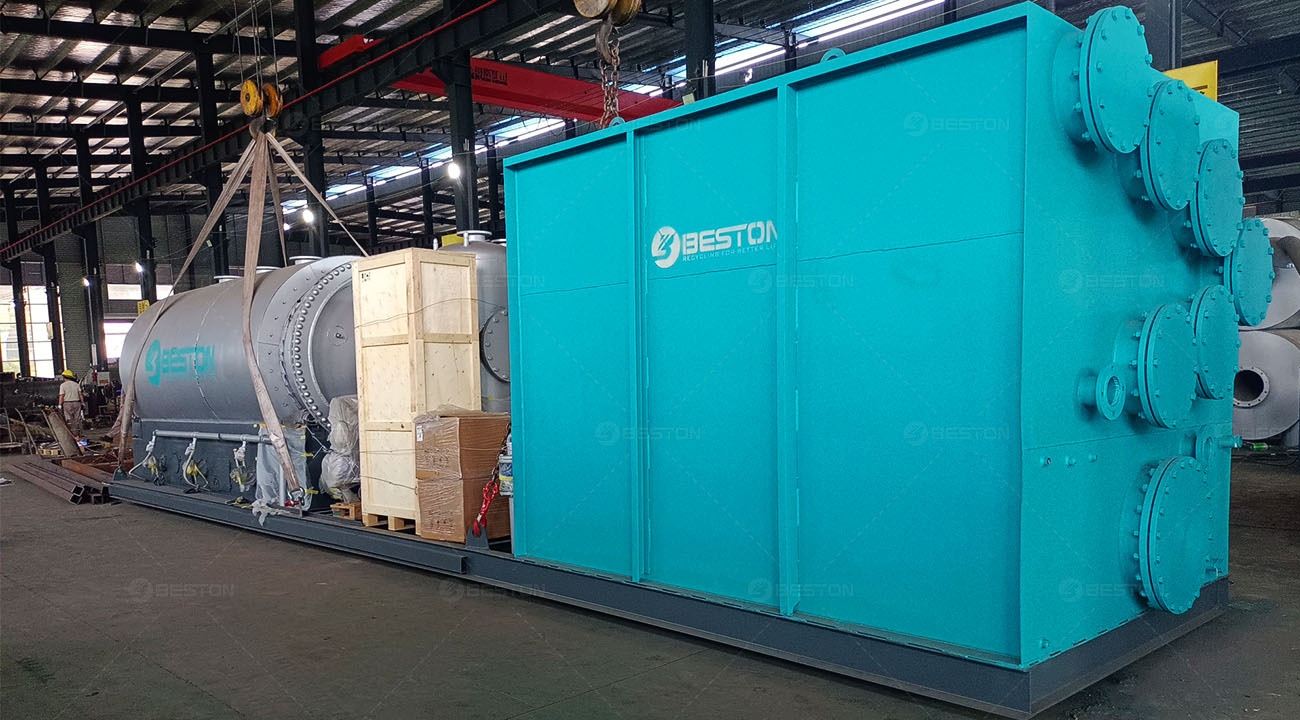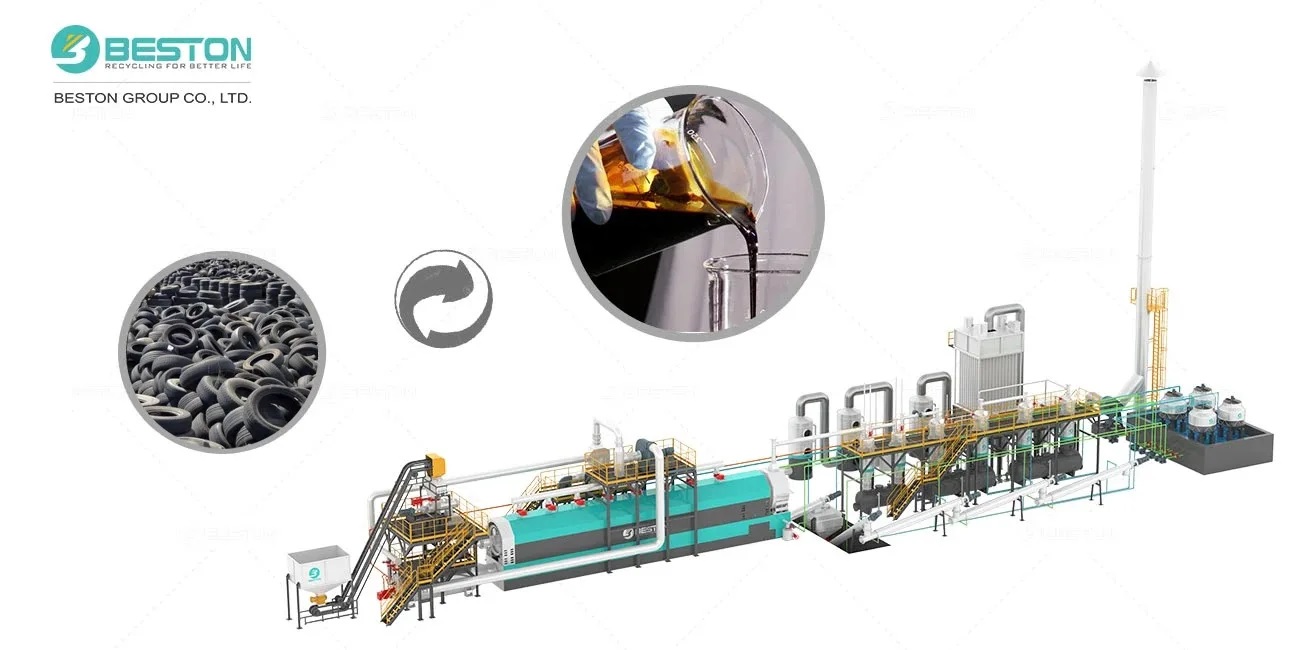Waste tires pose a significant environmental challenge due to their slow decomposition rate and potential for pollution. Pyrolysis, a thermal decomposition process in the absence of oxygen, offers a sustainable and efficient solution for managing waste tires.
Mobile Pyrolysis Plant: Choice for Small-scale Investment
A mobile pyrolysis plant represents a flexible and efficient solution for converting waste materials into valuable products such as fuel oil, carbon black, and syngas. Unlike traditional stationary units, a mobile pyrolysis plant is designed for easy transportation and on-site waste processing, making it ideal for areas with limited access to centralized waste management facilities. These mobile pyrolysis plants can process a variety of feedstocks, including tires, plastics, and biomass, directly at the waste site, reducing the need for waste transportation and associated costs. The mobile pyrolysis plant utilizes advanced pyrolysis technology, which heats waste materials in the absence of oxygen, breaking them down into useful byproducts. This innovative approach not only mitigates the environmental impact of waste disposal but also provides a practical and sustainable solution for waste-to-energy conversion.

Continuous Waste Tyre Pyrolysis Plant: Choice for Large-scale Production
A continuous waste tyre pyrolysis plant is an advanced system designed for the large-scale recycling of waste tires. Unlike batch pyrolysis plants that require manual loading and unloading, continuous pyrolysis plants automate the entire process, allowing for uninterrupted operation. The feedstock is continuously fed into the reactor, and the end products, such as pyrolysis oil, carbon black, and syngas, are automatically discharged. This level of automation enhances operational efficiency, reduces labor costs, and ensures consistent output quality. Additionally, continuous waste tyre pyrolysis plants are equipped with state-of-the-art control systems that monitor and optimize the process, ensuring high energy efficiency and minimal environmental impact. As the demand for sustainable waste management solutions continues to grow, continuous waste tyre pyrolysis plants provide an effective and scalable solution for tire recycling and resource recovery.

How Waste Tire Is Pyrolyzed?
The tire pyrolysis process is a method of recycling end-of-life tires into valuable resources through thermal decomposition. This process involves heating shredded tires in a sealed reactor without oxygen, causing the rubber polymers to break down into smaller molecules. The primary outputs of the tire pyrolysis process include pyrolysis oil, carbon black, and combustible gases. Pyrolysis oil can be further refined and used as industrial fuel, while carbon black serves as a reinforcing material in various rubber and plastic products. The generated gases can be reused within the plant, making the tire pyrolysis process self-sustaining and energy-efficient. By converting waste tires into reusable materials, the process significantly reduces landfill waste and environmental pollution, aligning with global sustainability goals.
Tyre Pyrolysis Plant Project Report
A tyre pyrolysis plant project report is a comprehensive document that outlines the feasibility, design, and implementation of a pyrolysis facility. It typically includes the following sections:
- Executive summary: A concise overview of the project, highlighting its objectives, benefits, and key findings.
- Market analysis: An assessment of the demand for pyrolysis products and the potential competition in the market.
- Technical feasibility: An evaluation of the technological aspects of the project, including the selection of pyrolysis technology, equipment requirements, and process flow.
- Financial analysis: A projection of the project’s costs, revenues, and profitability.
- Environmental impact assessment: An analysis of the potential environmental effects of the project and mitigation measures.
- Risk assessment: An identification and evaluation of potential risks associated with the project.
Tyre pyrolysis plants provide a sustainable and efficient solution for managing waste tires. By converting waste tires into valuable products, these plants contribute to a circular economy and reduce the environmental impact of tire disposal. As the demand for sustainable solutions continues to grow, mobile pyrolysis plants are poised to play a crucial role in addressing the waste tire challenge.